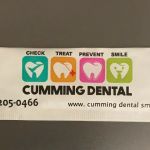
- Recognizing the Signs of Tooth Infection Symptoms
- Detailed Insight into Tooth Infection Symptoms
- Emergency Care Instructions for Tooth Infections
- When to Seek Professional Dental Help
- Real-Life Experience of Tooth Infection Emergency
- Dentistry Toothtruth Support for Dental Infection Care
1. Recognizing the Signs of Tooth Infection Symptoms
Tooth infections can escalate quickly, making early recognition of symptoms vital for preventing severe complications. Typical signs of a tooth infection include persistent toothache, sensitivity to hot or cold, swelling around the affected tooth or gums, and a bad taste or odor in the mouth.
Other symptoms might be fever, swollen lymph nodes under the jaw or in the neck, and general fatigue or malaise. These indicators suggest the infection is advancing and possibly spreading, requiring prompt attention.
Common Early Symptoms
The initial discomfort often starts as a mild, intermittent toothache that worsens over time. Sensitivity to temperature changes can indicate enamel damage or nerve involvement, both common in infections.
Visible Signs and Oral Changes
Swelling of the gums, redness, and sometimes pus discharge near the infected tooth are clear signs that the infection has developed into an abscess, which is an emergency condition.
2. Detailed Insight into Tooth Infection Symptoms
Understanding the progression of symptoms can help patients react quickly and appropriately. Early infection is often limited to the tooth pulp causing localized pain, but if untreated, bacteria may spread to surrounding tissues, leading to abscess formation and systemic symptoms like fever.
Pain Patterns and Their Significance
Sharp, throbbing pain that intensifies when lying down or chewing is a red flag for infection escalation. This pain often signifies that pressure is building within the tooth and surrounding bone.
Systemic Symptoms and Risks
Fever and swollen lymph nodes indicate that the immune system is actively fighting the infection. If ignored, this can lead to serious health risks including cellulitis or sepsis.
3. Emergency Care Instructions for Tooth Infections
Immediate steps can alleviate pain and control infection spread before professional care is accessible. Rinsing with warm salt water several times a day helps reduce bacteria and soothe inflamed tissues.
Pain Management Strategies
Over-the-counter pain relievers like ibuprofen or acetaminophen can reduce pain and inflammation. However, avoid placing aspirin directly on the gums or tooth, as it can cause tissue damage.
Avoiding Aggravating Factors
Refrain from consuming very hot, cold, or sugary foods and drinks, which can worsen sensitivity and pain. Maintaining gentle oral hygiene without disturbing the infected area is important.
4. When to Seek Professional Dental Help
Persistent or worsening symptoms, swelling that impairs breathing or swallowing, high fever, or spreading redness of the face require urgent dental or medical attention. Tooth infections can rapidly escalate to life-threatening conditions if neglected.
Importance of Timely Intervention
Professional dental treatment typically involves draining the abscess, prescribing antibiotics, and addressing the underlying cause such as root canal therapy or extraction.
Preventive Follow-Up Care
After emergency treatment, regular dental check-ups and proper oral hygiene are essential to prevent recurrence and maintain oral health.
5. Real-Life Experience of Tooth Infection Emergency
Consider Mike’s story, who initially ignored mild tooth pain. Within days, he developed severe swelling and fever, making it difficult to eat or speak. Emergency dental care revealed a large abscess that required immediate drainage and antibiotics. Mike’s quick response after symptoms worsened prevented more severe complications, illustrating the importance of recognizing tooth infection symptoms early.
Similarly, Lisa’s case involved early symptom recognition; she noticed sensitivity and gum swelling and promptly visited her dentist. Early treatment saved her from emergency surgery, underscoring the value of awareness and timely care.
6. Dentistry Toothtruth Support for Dental Infection Care
Dentistry Toothtruth offers a comprehensive range of resources for understanding signs of tooth infection symptoms and emergency care instructions. From professional advice to effective products for pain relief and infection control, our platform connects patients with trusted dental care options tailored to urgent needs.
Whether you require guidance on symptom recognition or seek reliable emergency dental services, Dentistry Toothtruth provides the support you need to manage tooth infections safely and effectively.







 Kremers, Forbes and Associates DDS5.0 (689 review)
Kremers, Forbes and Associates DDS5.0 (689 review) VCC: The Gary Center2.0 (45 review)
VCC: The Gary Center2.0 (45 review) Hassan Ismail5.0 (1 review)
Hassan Ismail5.0 (1 review) Open Door Family Medical Center- Sleepy Hollow4.0 (215 review)
Open Door Family Medical Center- Sleepy Hollow4.0 (215 review) Cumming Dental Smiles: Bethelview Road4.0 (529 review)
Cumming Dental Smiles: Bethelview Road4.0 (529 review) CJ Dental4.0 (13 review)
CJ Dental4.0 (13 review) The Importance of Oral Health Education During Pregnancy for a Healthy Pregnancy
The Importance of Oral Health Education During Pregnancy for a Healthy Pregnancy Best Tips for Brushing Your Teeth Properly for Healthy Gums: Essential Techniques for Oral Health
Best Tips for Brushing Your Teeth Properly for Healthy Gums: Essential Techniques for Oral Health Why Skipping Dental Checkups Can Lead to Bigger Oral Health Problems
Why Skipping Dental Checkups Can Lead to Bigger Oral Health Problems Advantages of Porcelain Dental Restorations
Advantages of Porcelain Dental Restorations How Can Diabetes Cause Tooth and Gum Problems? Preventing and Managing Oral Health Issues
How Can Diabetes Cause Tooth and Gum Problems? Preventing and Managing Oral Health Issues Healthy Habits for Promoting Good Oral Health and Hygiene: Tips for a Healthy Smile
Healthy Habits for Promoting Good Oral Health and Hygiene: Tips for a Healthy Smile